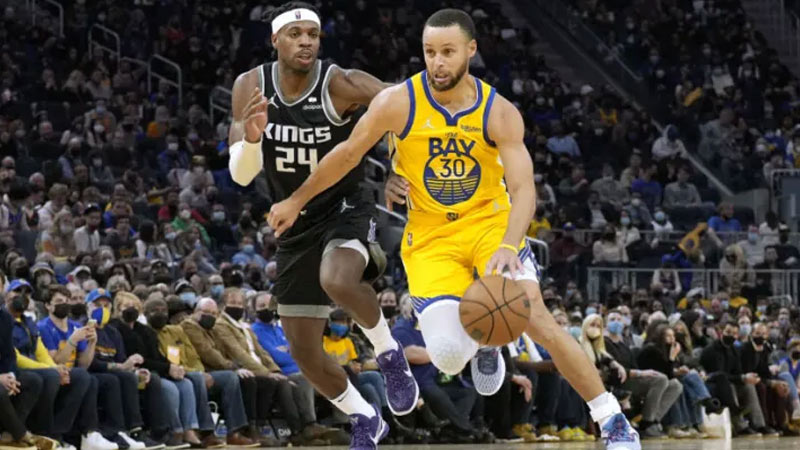In the dynamic world of basketball, offensive strategies hold the key to unlocking success on the court.
One such strategy is the Flex Offense, a versatile and disciplined approach that emphasizes precise execution, constant movement, and strategic positioning.
In this comprehensive guide, we will delve into the intricacies of the Flex Offense, exploring its origins, execution techniques, and defensive strategies to counter it.
Also, we will deal with some of the essential tips for mastering this tactical brilliance in basketball. So, stay focused.
What Is a Flex Offense in Basketball?
The Flex Offense is a sophisticated and highly structured offensive system that prioritizes continuous player movement, strategic positioning, and precise execution of set plays.
It is renowned for its emphasis on creating scoring opportunities through a combination of screening, cutting, and fluid ball movement.
The Flex Offense typically utilizes two post players positioned near the low block and three perimeter players spread out on the perimeter.
The strategic placement of players and the intricate coordination of screens and cuts are key elements of this offense.
At its core, the Flex Offense aims to generate scoring chances by exploiting defensive weaknesses and creating mismatches.
The constant movement of players, both on and off the ball, forces the defense to react and adapt, opening up opportunities for offensive players to get open and receive passes in advantageous positions.
The Flex Offense relies on disciplined execution, patience, and precise timing to execute its set plays effectively.
Screens play a pivotal role in the Flex Offense, with players setting screens to free up teammates for open shots or driving lanes to the basket.
History of the Flex Offense

Source: bluemanhoop.com
The Flex Offense is a basketball strategy that has been utilized by many teams at various levels of the game. Here is a historical overview of the Flex Offense, highlighting its key points:
Origin
The Flex Offense was developed by Hall of Fame coach Carles “Pete” Newell in the 1960s. Newell, known for his innovative coaching techniques, designed the Flex Offense as a structured and versatile offensive system.
Concept
The Flex Offense is primarily characterized by constant movement, screening, and cutting. It aims to create continuous motion and exploit defensive weaknesses through precise timing and execution.
Basic Structure
The offense typically starts in a standard flex formation with players positioned in a high and low post. It emphasizes player movement, ball reversals, and screening actions to create scoring opportunities.
Continuous Motion
One of the defining features of the Flex Offense is its continuous motion. Players in the offense are consistently moving, either through cutting to the basket, setting screens, or relocating to different spots on the floor.
Screening Actions
Screens play a vital role in the Flex Offense. Players set screens for each other to create separation from defenders, allowing for scoring opportunities. These screens can be used to create open jump shots, backdoor cuts, or post-up opportunities.
Read and React
The Flex Offense relies on players’ ability to read the defense and make appropriate decisions. Players must react to defensive actions, such as switching, denying passing lanes, or overplaying, and adjust their cuts and movements accordingly.
Versatility
The Flex Offense is adaptable to different styles of play and personnel. It can be effective against man-to-man defenses, zone defenses, and even full-court pressure, as it emphasizes teamwork, player movement, and spacing.
Success and Popularity
The Flex Offense has been widely successful at various levels of basketball, from high school to the professional ranks. Many successful coaches have implemented their variations of the Flex Offense, including Bob Knight, Roy Williams, and Rick Majerus.
Evolution and Variations
Over time, coaches have added their own tweaks and adjustments to the Flex Offense, creating variations and new plays within the system. These modifications cater to the strengths of their respective teams and exploit specific defensive vulnerabilities.
Enduring Legacy
Despite the evolution of basketball tactics, the Flex Offense remains relevant and is still used by many teams today. Its emphasis on movement, spacing, and teamwork continues to be valued as a fundamental offensive strategy in the sport.
The Flex Offense has stood the test of time as a successful and adaptable basketball strategy, influencing generations of coaches and players with its emphasis on motion, screening, and player decision-making.
How to Execute a Flex Offense in Basketball?

Source: masterclass.com
Executing a Flex Offense requires disciplined positioning, precise execution of screens and cuts, and effective ball movement. To successfully run the Flex Offense, teams must focus on the following key elements:
Alignment and Positioning
Proper alignment is essential for initiating the Flex Offense. Post players should position themselves at the low block, while perimeter players spread out on the wings and corners.
This spacing creates optimal passing angles and allows for effective screening and cutting actions.
Flex Screen
The offense begins with a flex screen, where a perimeter player cuts from the wing or corner to the low block.
Simultaneously, a post player sets a screen to create separation for the cutter. The goal is to create a mismatch or open scoring opportunity near the basket.
Flex Cut
After setting the screen, the post player executes a flex cut, moving to the high post or top of the key. This cut creates space for the cutter to receive the ball and potentially opens up opportunities for the post player as well.
Continuous Movement
The Flex Offense relies on constant movement and spacing. Players should be active off the ball, setting screens, making cuts, and filling open spaces on the court.
This continuous movement keeps the defense off balance, forces them to make decisions, and creates scoring opportunities.
Ball Movement
Precise passing and reading the defense are crucial in the Flex Offense. Players must make quick decisions to keep the ball moving and exploit defensive rotations.
Effective ball movement creates openings for cutters, generates open shots, and increases the unpredictability of the offense.
In addition to these key elements, communication and awareness of teammates’ movements are vital for the successful execution of the Flex Offense.
Players must have a solid understanding of their roles and responsibilities within the system, as well as the ability to read and react to the defense.
How to Defend Against a Flex Offense?
Defending against the Flex Offense requires solid communication, discipline, and a deep understanding of the offensive patterns. Here are some key defensive strategies to consider:
Denying the Flex Cut
To disrupt the Flex Offense, defenders can focus on denying the initial flex cut.
By putting pressure on the offensive player attempting to cut, defenders can prevent the offense from establishing its desired positioning and force them to find alternative options.
Communication and Switches
Effective communication among defenders is crucial when defending against the Flex Offense. This allows for proper defensive switches and rotations when screens are set and cuts are made.
Clear communication ensures that defenders are covering the appropriate offensive players and prevents defensive breakdowns.
Disrupting Timing and Spacing
Disrupting the timing and spacing of the Flex Offense can throw off its effectiveness.
Defenders should aim to apply pressure on the ball handler, deny passing lanes, and be active in helping defense to disrupt the offense’s flow and rhythm.
By challenging every pass and making it difficult for the offense to execute their desired actions, defenders can create turnovers and scoring opportunities.
Boxing Out and Rebounding
The Flex Offense often involves post players moving and cutting to create scoring opportunities. Defenders must prioritize strong boxing out and rebounding efforts to limit second-chance opportunities for the offense.
By securing defensive rebounds, defenders can deny the offense additional scoring chances and regain possession for their team.
Anticipating and Countering Actions
Through careful scouting and understanding of the Flex Offense, defenders can anticipate the patterns and actions of the offense.
By studying the tendencies of the players involved, defenders can be proactive in countering the Flex Offense, such as jumping passing lanes, providing timely help defense, and making it difficult for the offense to execute their desired plays.
Tips for Executing a Flex Offense
Some of the tips for executing a flex offense are in the following section.
Master the Timing
Precise timing is key in executing the Flex Offense. Players must understand the movements and cuts involved and coordinate their actions to create optimal scoring opportunities.
Communication and Awareness
Effective communication and awareness of the defensive rotations are vital to exploit gaps and mismatches in the defense.
Utilize Screens Effectively
Screens play a pivotal role in the Flex Offense. Players must set solid screens, read the defense, and make decisive cuts to take advantage of the screens.
Patience and Discipline
The Flex Offense requires patience and discipline. Players should avoid rushing or forcing shots and instead focus on executing the plays and exploiting the defensive openings.
Practice and Repetition
Mastery of the Flex Offense comes with practice. Regular repetitions, understanding each player’s role, and building chemistry are crucial for seamless execution.
FAQs
What are the primary objectives of the Flex Offense?
The primary objectives of the Flex Offense are to create scoring opportunities through constant movement, screens, and cuts, exploit defensive weaknesses, and maintain disciplined positioning.
Can the Flex Offense be adapted to different player strengths?
Yes, the Flex Offense can be adapted to the strengths and skill sets of the players on the team. Variations and adjustments can be made to suit the team’s personnel and maximize their abilities within the offensive system.
Is the Flex Offense suitable for all levels of basketball?
The Flex Offense can be utilized at various levels of basketball, from youth leagues to professional play.
However, the complexity and execution may vary based on the level of the players and their understanding of the offensive system.
What are some common variations of the Flex Offense?
Some common variations of the Flex Offense include the “Dribble Drive Flex” and the “Flex Cut Continuity,” which incorporate additional elements such as dribble penetration and continuous cutting actions.
How can teams adjust defensively to counter the Flex Offense?
Teams can adjust defensively by denying the initial flex cut, communicating switches, disrupting timing and spacing, and focusing on strong boxing out and rebounding efforts to limit second-chance opportunities.
Bottom Line
The Flex Offense is a structured and disciplined offensive system that emphasizes constant movement, precise execution, and strategic positioning.
Originating from the minds of basketball coaching legends, it has stood the test of time and continues to be a valuable offensive strategy.
By mastering the execution, understanding defensive strategies to counter it, and following essential tips, teams can unlock the full potential of the Flex Offense, creating scoring opportunities and outsmarting their opponents on the basketball court.
Incorporating the Flex Offense into a team’s repertoire requires practice, teamwork, and a commitment to disciplined execution, leading to enhanced offensive capabilities and success on the court. Best of luck.







